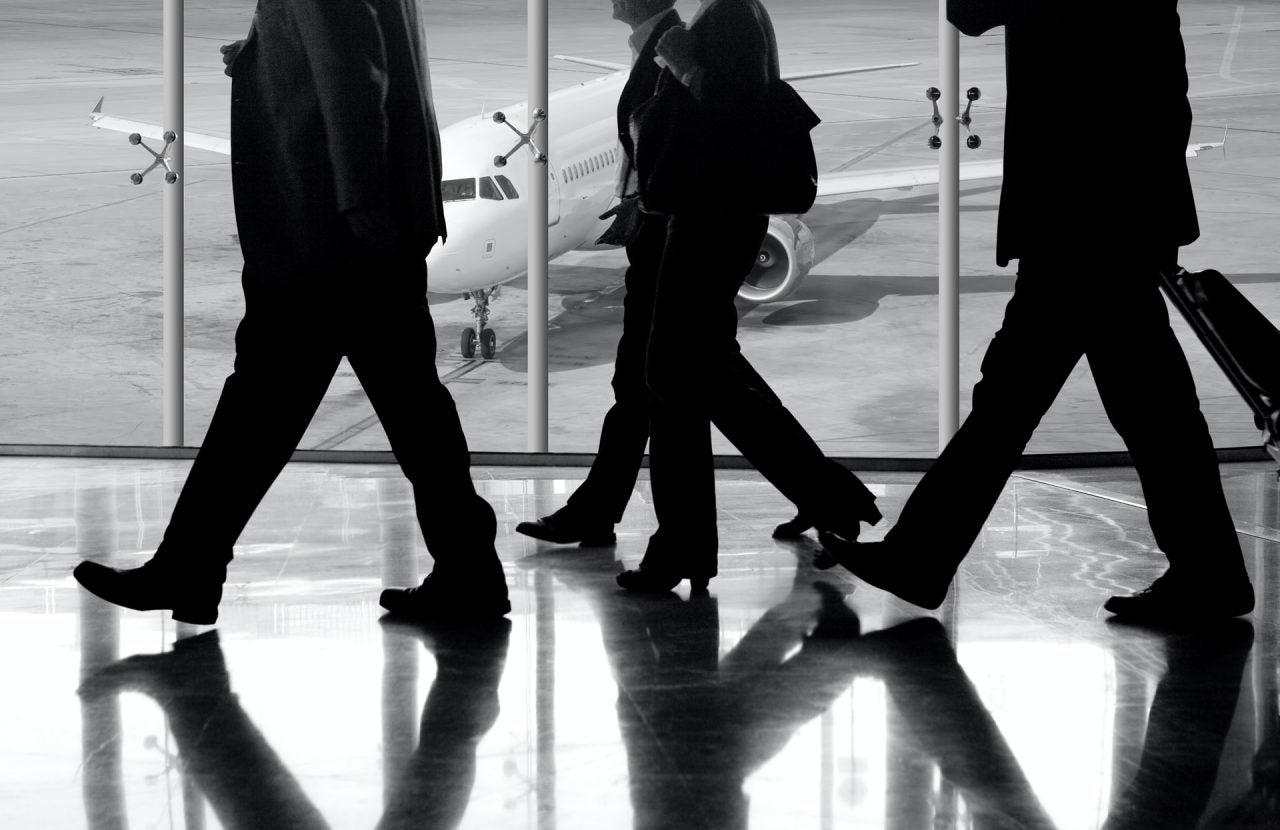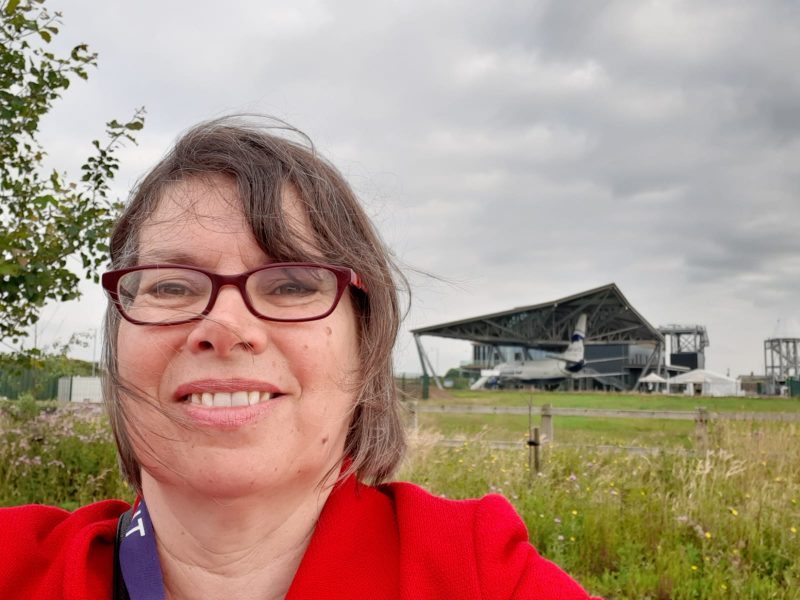
The Covid-19 pandemic has heightened the need for contactless technology and aviation is one of the foremost industries adopting it. Many companies have been developing touchless airport tech in the form of virtual boarding passes, biometric face scanners and biometric boarding passes, which recognise the passenger’s face.
Opened at Cranfield University in July, the Digital Aviation Research and Technology Centre (DARTeC), is a research facility built with the aim of making the UK a global leader in digital aviation research. At its centre, Thales – one of the founding partners of the centre – has unveiled its ‘touchless journeys’ concept, which aims to offer contactless technology for the aviation industry to provide faster and more efficient travel.
How well do you really know your competitors?
Access the most comprehensive Company Profiles on the market, powered by GlobalData. Save hours of research. Gain competitive edge.

Thank you!
Your download email will arrive shortly
Not ready to buy yet? Download a free sample
We are confident about the unique quality of our Company Profiles. However, we want you to make the most beneficial decision for your business, so we offer a free sample that you can download by submitting the below form
By GlobalDataThe centre aims to address some of the main challenges currently facing the aviation industry such as airport efficiency, health procedures and end-to-end capabilities.
Julia Jiggins, head of strategic marketing, aviation, and space at Thales UK, discusses the solutions being developed at the centre and highlights the benefits of this technology.

Frankie Youd (FY): Thales is one of the founding partners of the centre; when did this concept first come about?
Julia Jiggins (JJ): Thales became involved in 2016 and built up the conversation about what do you mean by digital aviation, what’s the requirement? It’s looking at the key technologies that can open up an aviation whole ecosystem. It’s a recognition that historically you’ve had everything segmented with the airport, the aircraft, the airline operations, or the airspace – everything had its little segment, and they were never connected.
With modernisation, digital tools and going into open networks, there seemed to be a real opportunity to improve the efficiency of the whole ecosystem. It’s talking about end-to-end processes, and it’s doing it across those spaces. We’ve been working with Cranfield at the DARTeC facility to really help shape the research themes.
What facilities are located within the new centre?
In the building itself, there’s a number of focused innovation labs that are quite unique. One of them is the ‘passenger experience lab’ which is really an ability to follow a passenger as they come into the building and as they go on to an aircraft, which allows Thales to simulate all the touch points and what you need to do.
The thing I’ve learnt with digital technology is it’s very difficult to visualise. Whereas, if you see it in use and you see demonstrations and people can experience it, then it’s much easier to adopt. By having it operating in the DARTeC environment we’re gathering data all the time, particularly about the behaviour of people using this type of technology.
Thales has unveiled ‘touchless journeys’, could you tell me about the solutions that are currently being developed?
The objective of the ‘touchless journeys’ is to allow the passenger to pass through an airport using their face as one ID. It makes the journey much faster and efficient but also more secure. The intention is for the passengers to pre-register, so they will create their identity documents with their faces. This then allows them to do the checking in, to walk through the various airport checkpoints and the gates as they go through, there’s no need for paper documents.
We’ve also developed a high-temperature detection technology. The airports found that passengers wanted to have reassurance that you and other passengers didn’t have temperatures, but they didn’t want to have a thermometer stuck in their ear. It’s advanced technology within a camera that allows you to walk past it which allows for a much quicker filtering, which is a health benefit with people being nervous about being in crowds.
What are the main benefits that these solutions offer?
I see that by integrating data you get a much better view of what’s going on, but also if you’ve got people efficiently moving and faster moving through the system, they’re less stressed. One of the things we’re seeing around the behaviour is with this technology people are less stressed and they’re more relaxed in the environment, which means they do more shopping, they do more social elements of the journey rather than the stress of the security and clearing through the checkpoints.
There’s also evidence building that you need fewer staff to be managing the process of the passenger going through, because passengers are doing more self-help airports can redeploy their people into different means to make sure that experience is better.
The third area is it allows this process of getting people through the airport to be much shorter. Historically, you’ve got that two-hour period because you’ve got to get through security and get through the various checkpoints.
With biometric and touchless solutions there are often concerns around data privacy. How does this technology ensure data privacy?
The major thing for the technology is that Thales doesn’t store any data centrally, there’s no stored data. By designing the process so that the passenger’s control when they share the data that avoids a lot of the concerns around privacy.
What the passenger doesn’t see is the complex protection behind the scenes which is continually improving. Thales uses a lot of the security work we do behind the scenes to support a lot of IT systems to help support this application. The fundamental thing is it’s not controlled centrally, stored centrally and the passenger controls when providing their data.
Would you say that the pandemic has accelerated the creation of touchless technology?
I would say that the technology was in the works, you can see by Thales participation with DARTeC, we were thinking about that from December 2016, it was starting to get into that whole aspect.
What I do think is that the adoption of this technology has been accelerated by the pandemic. One of the benefits from the pandemic is that people are much more comfortable about confirming their identity through a phone, using their phone to register for access to buildings so it’s not an alien concept.
The pandemic has accelerated the adoption of the technology – you can see that by lots of proof of concepts, the government trying to get demonstrations in place so that people can really evaluate the benefit. I think the technology was there in its infancy beforehand, but its adoption has been accelerated.
Do you see this as being the future of the industry?
I would say that it will become a paperless experience, certainly. I think it will also move to being more self-controlled, so that you control your whole journey from when you leave your house to the airport, through the airport, on the plane, off the plane, and to your destination. It will all be digitally managed, and you can do most of it before you leave the journey, you can do bits in the journey, and you then can control what you do with your time.
If you want to have two hours spent shopping in the airport you can spend two hours, but if you only want 30 minutes because you just want to arrive and get straight on the plane you can do it, the airports will be much more flexible and much more tailoring.
I think the airports are going to be changing how they offer the experience. I also think it will be a much less stressful experience generally whether you want to get through an airport quickly or want to spend time there.








